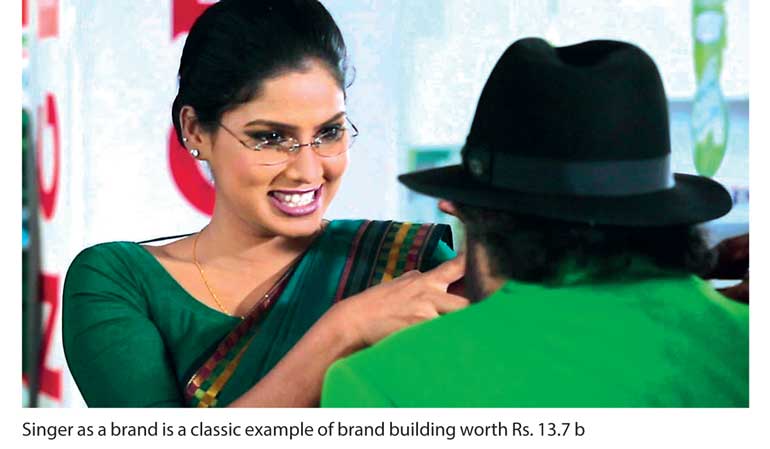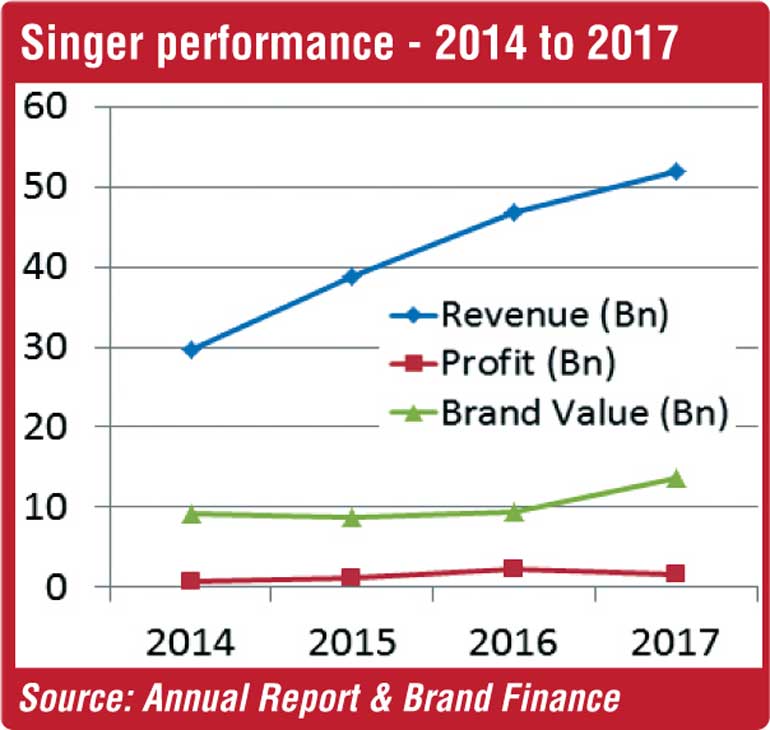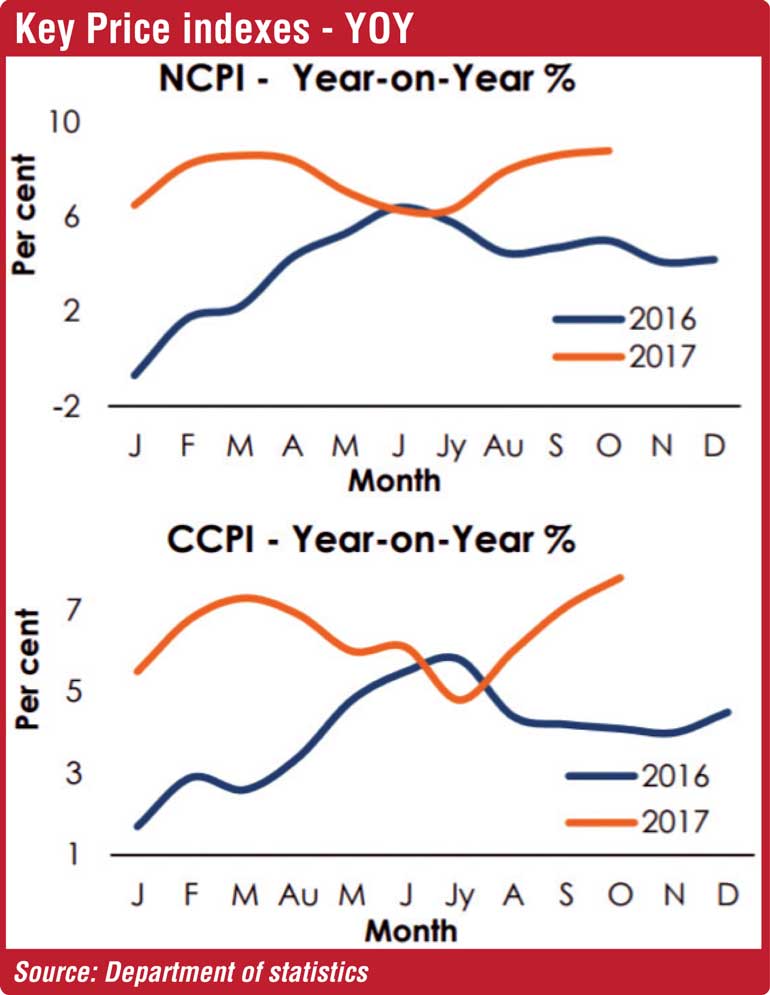Friday Jan 09, 2026
Friday Jan 09, 2026
Wednesday, 29 November 2017 00:00 - - {{hitsCtrl.values.hits}}


 Let’s accept it, brand Sri Lanka has received a severe beating in the last three years due to the overall performance suffering from all fronts.
Let’s accept it, brand Sri Lanka has received a severe beating in the last three years due to the overall performance suffering from all fronts.
The quality of life of a Sri Lankan household has dropped for the first time in three years. Overall consumption of the FMCG industry at a household level has declined by -3.1% in Q1 to -2.5% in Q2, and Q3 by 3.6% in 2017 as per the latest report by Nielsen.
The forecast for the last quarter will not be positive as the National Consumer Price Index (NCPI) and Colombo Consumer Price Index (CCPI) have steeply increased versus last year, adding more pressure to the consumer purse.
For the first time in the last seven years the brand value of Sri Lanka has grown by single digit to just $ 78 billion, growing at rates equal to Tajikistan, which is not healthy for a country that trusted a progressive Government when voted in January 2015. The biggest drag on the brand performance is the governance issue which has tainted the country with the alleged corruption of the Central Bank bond scam that is said to be running to trillions of rupees.
This includes the respected COPE members of the Government involved in contacting the perpetrator of the scandal that led to the resignation of the Central Bank Governor and the Ministry of Finance which has tainted the country and the total health of the financial sector. The good news is that the President has taken the high ground and pledged to clean the country which is the silver lining in Sri Lanka.
In this background we see the private sector of Sri Lanka in high gear driving brand Sri Lanka, pledging confidence to the ailing macroeconomy. My mind goes to the words of the famous guru of nation branding Simon Anholt who advocates that what the country require in tough times is for the people to speak positively about the country and not merely issue press releases or carry out glitzy global image building campaigns.
Annolt says: “We need to keep in mind that countries with a powerful and positive image can export more products, culture, people and services and attract more tourists, investors and immigrants and the attention and respect of other governments. Countries with weak or damaged images find it much harder and more expensive to achieve all of these goals.”
The private sector Most Popular Brand voted in by the people for over a decade, Singer, is a classic example of a company that is showcasing to the world the power of business and brand building in Sri Lanka.
Overall turnover has grown at 18-30% in the last three years from Rs. 29.6 billion to an estimate of Rs. 52 billion as at end 2017. The overall brand value has catapulted from Rs. 8.8 billion to Rs. 13.7 billion which explains the power of the brand for future expansion.
If we track back Singer was a brand that was just registering Rs. 11.3 billion growth way back in 2009. By 2013 the brand had really benefited from peace dividends to double the top line to Rs. 25.4 billion and crossing Rs. 1.2 billion in profit the year before, which became a case study globally on how a private sector company can unleash one’s performance post a war.
The challenge now is how these power brands can support the country so that Sri Lanka can focus on driving substance rather than spin, about real improvements rather than marketing magic. A point to note is that reputation cannot be constructed; it can only be earned. The question should never be ‘What can we say to make Sri Lanka famous?’ but ‘What can we do to make Sri Lanka relevant?’ Relevance is the only issue that matters.
In this backdrop of macroeconomic challenges and global realities that are unfolding what Sri Lanka right now requires is for the President to continue the drive to clean the country on corruption and instil good governance.
Let me pick up the strategies that powerful brands do that can support the country agenda to build a strong nation brand.
1. Powerful brands demonstrate their values in every decision that they make. In fact they go on to make a statement to their customer at different stages of the purchasing process. Such companies carefully architecture the impression that want to leave in a consumer’s mind every time they come in contact with the brand and then they implement it with absolute precision.
For example, if we take Colombo Courtyard, the boutique hotel in the city, from the point a customer enters through its stately gates to parking the vehicle and then walking to the restaurant, they leave a clear mark on a customer that makes the experience unique. A point to note is that at each touch point the customer experiences the principle by which Colombo Courtyard operates. This is what makes it a powerful brand. I guess this is why Colombo Courtyard won the Best Luxury Business Boutique Hotel in Sri Lanka award. Hence, the task for a company wanting to practice this science of touch points’ must first identify these consumer touch points and then do the needful in the recruitment and training of its staff so that gold standard implementation is possible. This is what I would call principles-based operations in a company.
2. Promises: Here what we see is that powerful brands analyse the underlying motivation that makes one get into bed with a brand. For instance the reason why someone will go in search of a Siddhalepa balm is because he or she believes that by applying Siddhalepa on can get relief from a nasty headache. This means that powerful brands deliver promises that they are supposed to be selling continuously. Those who do it with impact make the brand take residency in a consumer’s mind, which in turn results in trial and loyalty that results in increasing sales. This is the essence of a powerful brand.
However, a point to note is that successful brands are driven by individuals. Their personal motivation fuels the organisation, which is where the importance of brand management comes into play. Money is not the prime reason for a brand to move. It is more the convergence between the qualities of the person who drives a brand and the promise the brand offers to a customer. This means that it will require careful recruitment rather than training.
3. Production: Powerful brands create a ‘wow’ every time a consumer comes in contact with them. This involves a careful engineering of the colour schemes, music, temperature, lighting, dress code of the staff and the workers’ attitude to meeting people. If we take a brand like Cinnamon Grand it is one of the best cases in point that come to mind. It has done this engineering successfully, leaving a ‘wow’ every time one does a workout routine. I guess it can teach a global brand like Shangri-La that was recently launched that is not wowing the consumer as we speak after just ten days in Sri Lanka.
4. Press: Powerful brands get strong press coverage. The key is noteworthy press exposure rather than the occasional photography that rolls out in the media. We need to carefully evaluate the avenues that are available and how the information that we release fits into the story/brand. In the recent past we have seen how some focused information has been generated from the Academy of Design (AOD). The information that has rolled out has also been relevant, which tends to add to the brand’s equity. The challenge is how to maintain this trend and  then how it can touch a global consumer so that the country benefits at large. The Sri Lanka Design Festival (SLDF) is a case in point that does this task very well.
then how it can touch a global consumer so that the country benefits at large. The Sri Lanka Design Festival (SLDF) is a case in point that does this task very well.
5. Prizes: Evaluating performance and rewarding the right behaviour are hallmarks of a powerful brand. Finding opportunities to recognise and reward those that demonstrate these values tends to bring out the brand promise. Always remember that if you want to change behaviour, then reward the behaviour that is in line with organisational values. In Sri Lanka a company that does this well is Singer. The brand being crowned as the most popular brand for over a decade is testimony to this fact.
The above are some moments that have created powerful brands in Sri Lanka. Now the bigger challenge is how we take these vibes global so that the country can benefit given the challenges it is up against.
(The author is an award winning brand marketer and category brand marketer who serves exports, tourism and retail at the national level. He has twice won the Best Marketer award in Sri Lanka and is an alumnus of Harvard University Boston and heads a global property development company.)